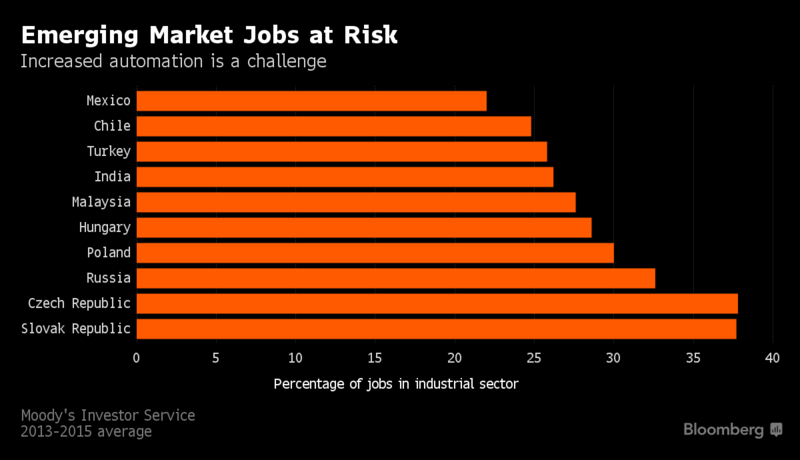NEWS
Robotics will solve the demographic problems of Germany and Japan
The proportion of the elderly in Japan and Germany is growing every year. A demographic time bomb can lead to an acute shortage of labor. Experts of the rating agency Moody's are sure that the introduction of robotics will help save the situation. But workers in emerging markets, including Russia, will be at a disadvantage.
The increase in life expectancy and low birth rates in Germany and Japan have negative consequences for economic growth. The proportion of the population over 65 years is increasing, and the percentage of the workforce is decreasing. However, both states have two key advantages that will help them avoid the economic downturn, analysts at Moody's report.
Exports of own goods in Germany - the largest economy in Europe - account for one third of GDP. In Japan, this figure is 12%. At the same time, both countries are leading in terms of the number of robotics introduced in production. It is the robotization of production that will help Germany and Japan maintain a stable rate of output of goods and economic growth.
China, South Korea and the United States are also among the leaders in the introduction of industrial robots. In all three states, life expectancy is increasing, and it is the introduction of robotics that will mitigate the consequences of the demographic crisis.
The loser in the new market conditions will be, for example, developing economies with a high share of high-tech goods exports. Bloomberg cites Hungary, the Czech Republic and Slovakia as examples, in which exports of high-tech goods account for more than 50% of GDP. About 16-20% of exports go to Germany.
Countries with low wages will also suffer from the massive introduction of robots. For example, Vietnam, Malaysia, Indonesia and Brazil are also at high risk. The production of high-tech goods for export accounts for 30% of Thailand's GDP, 35% of Malaysia's GDP and 31% of Vietnam's GDP. A significant share of exports goes to China, which is considered the largest importer of robotics. However, in the near future, China intends to establish its own production of robots and components and produce 100,000 robots per year by 2020.
Robotization will not bring much benefit to the countries which a large proportion of the population works in the industrial sector. Analysts of Moody's suggest that production processes will move to factories with the most high-tech equipment. "Developing economies will lose a share in the export market, as technologies will change the modes of production and the principles of trade," Bloomberg report.
© All rights reserved. Citing to www.ict.az is necessary upon using news






